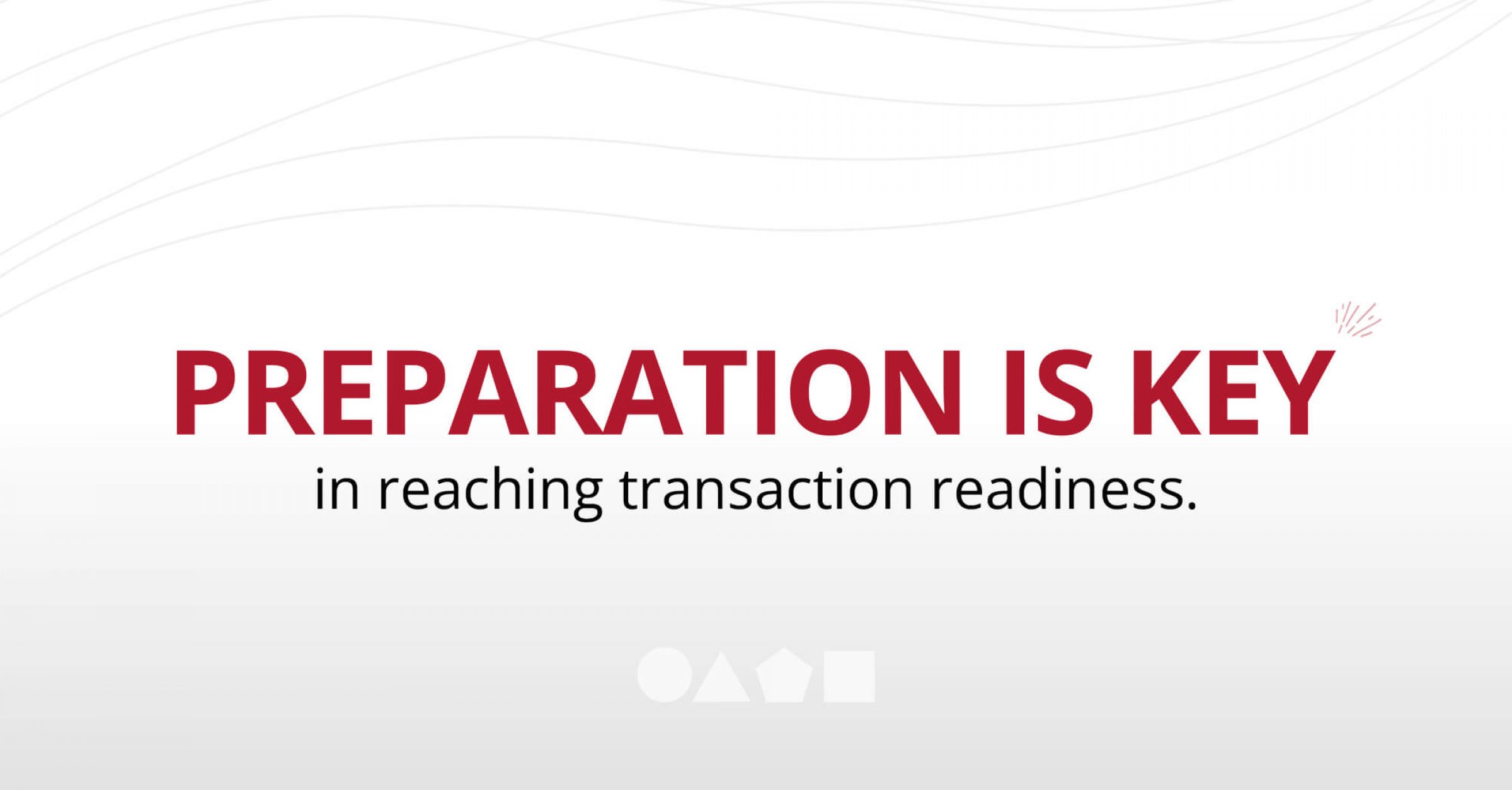Whether looking to facilitate a liquidity event for shareholders as a private company or ensuring your employee equity plan is fit for purpose when going public, you will most likely need to put significant time and effort into the necessary preparation work.
Devoting the required attention to your transaction readiness journey is essential at the best of times, but in 2023, with volatility characterizing market conditions, it becomes all the more important if you want to sidestep avoidable pitfalls that could undermine what you are trying to accomplish.
Put simply, you cannot control the state of the market, but you can control your transaction readiness. There are no guarantees that events will play out as you want, but by being as prepared as possible, you give whatever transaction is going to take place the best chance of playing out in a positive way for all involved.
The importance of preparation
Ultimately, the key consideration for company perspective is to leave no stone unturned in seeking to ensure that internal equity plans are running smoothly by the time of the transaction. Getting to the point of being confident that this is so will require a detailed assessment of those plans, focusing primarily on four areas:
- The integrity and reliability of all relevant data.
- The robustness of whatever systems and process infrastructure are involved in the management of those plans.
- Making sure all compliance obligations are being met.
- Doing all that you reasonably can to ensure that participants are fully engaged and understand what is happening.
For private companies looking to go through the IPO process, a thorough assessment of the above points might begin as far back as two years prior to the actual flotation. That the lead-in period may require so much time should underscore the point – getting transaction ready can be a long and involved process, one that requires great care and attention to detail.
The idea that it can take so long to achieve transaction readiness might appear daunting at first glance, but as with so many tasks, the key is to get organized. At the outset, you need to recognize what must be done and when along the timeline. Once you do that, you will be ready to proceed.
The pre-transaction checklist
Here, we present a checklist of some of the necessary tasks your company must perform with a view towards ensuring that your equity plan becomes and remains transaction ready.
Early steps (18 to 24 months pre-IPO):
- Cap table audit: At its most basic level, a cap table provides a record of existing shareholdings in the company, i.e., who owns stock and how much they own. A clean cap table is one that provides fully up to date information on various equity holdings and relevant transactions, with the picture tending to become more complex with each investment round. One of the common dangers associated with a cap table is that multiple copies can end up in circulation internally, with some updates added to one version but not another, and vice versa. That this is potentially problematic should be obvious. An audit process will seek to ensure that all relevant information is consolidated into a single source and maintained thereafter, meaning you can be confident at the outset of your transaction journey that the contents of your cap table are accurate.
- Participant demographics: Maintaining accurate demographic details for all plan participants is important. This means making sure you have current information on, for example, legal names, tax numbers, and work location. These details are necessary for reporting purposes and also for ensuring tax withholding is correct.
- Contact details for non-employee stockholders: Depending upon your circumstances, there may well be employee and non-employee participants in your equity plan. These “outside” participants might be investors or consultants, or perhaps individuals who signed up as employees, subsequently left the company, but may still be part of the plan. Whatever the category, from the perspective of transaction readiness, it is at least as important to have accurate contact details for non-employee plan members as it is for employee participants. While it may be more straightforward to make direct contact with employees, plan administrators also need to be able to reach out to non-employee participants when the time comes to send out information on the proposed transaction and secure the necessary signatures.
- Assess software system and plan provider: Going public constitutes a massive change for any company. At a basic level, post-IPO, equity plan participants who own stock can trade their shares on the stock exchange on a daily basis, whereas it is not as simple to sell stock in a private company. That being the case, the systems and infrastructure you have in place as a private company may or may not prove to be a good fit once you go public. So, you should look to give yourself time to identify whether you need to look for a new equity plan management provider.
If a change is required, getting those new systems in place as early as possible may help to prevent unnecessary headaches down the line. One of the key considerations as you assess your existing system will be whether it will be able to scale up in line with the increased activity you can expect once you become a publicly traded company. - International compliance: With remote and mobile employees an increasing reality of the modern workforce, companies need to consider how this may impact on their global equity plans. When you grant equity to employees in a new location or when they are moving between different countries, that may have tax and regulatory implications, and you must prepare for this scenario. That means ensuring all employee location data is registered and then updated as required somewhere in your system, and also that relevant personnel familiarize themselves with legal and tax regulations in various jurisdictions.
- Sarbanes-Oxley (SOX) Act of 2002 compliance: All public companies in the United States are obliged by law to abide by the terms of the SOX Act. Complying with the legislation can be demanding, with each of its 11 sections dealing with a different area under the broad topic of protecting investors from accounting fraud, e.g., oversight, annual reports, corporate responsibility, and auditor independence. Becoming SOX compliant can prove time-consuming and expensive.
Companies may choose to bring in expertise from outside to help, and the process may well lead to the introduction of new policies and systems. From the IPO perspective, it is best to move on SOX as early as possible. The logic is to identify compliance gaps early in the journey and introduce as many SOX-like controls as possible while still a private company. - Communications and education: Looking to implement an effective shareholder communication strategy as early as possible can prove beneficial down the line.
Assisting participants in understanding their holdings, the practicalities of vesting and exercising, and the tax implications of various types of equity awards at the first opportunity will help to reduce the possibility of confusion and misunderstandings and the need for further explanations later in the process.
Next steps (12 to 18 months pre-IPO):
- Update equity award offerings: The period when a company is in the process of transitioning from private to public can be a logical time for it to examine its equity awards offering, with a view towards adding new plans. Part of the rationale at play here may be a desire to incentivize employees to remain with the company beyond the immediate short-term post-flotation, and thus help ensure stability at a time of change. ESPPs tend to be a popular choice with public companies, while RSUs are typically offered post-IPO. Whatever types of equity compensation a company opts for, it is important to understand how they work, how they are administered by public companies, and whether the vesting and tax scenarios play out differently compared to whatever plan(s) you currently offer. With this in mind, some companies will choose to consult with legal and tax advisors early in the process, rather than trying to figure it out closer to the transaction date.
- Additional resources planning: When moving through the steps on the road to IPO, companies will need to factor in the additional personnel and increased budget-related costs that may be required along the way and in the post-flotation period. As well as new employee hires, you may deem it necessary to use external consultants and transfer agents, as well as whatever legal or accounting support may be needed. As well as that, training may be required for managers and relevant HR personnel to equip them for any anticipated increase in plan participant enquiries in the lead-up to and post-flotation.
While the tasks listed above are all vital, what is perhaps at least as important for any company at the beginning of its IPO journey is to work with reliable, experienced partners who have been around the track before and know what is required to achieve a successful outcome, a specialist team that is dedicated to ensuring you are transaction ready on the required timeline.
Global Shares can be that partner for you. Call us now to speak to our experienced personnel and hear what we can do for you.
This publication contains general information only and J.P. Morgan Workplace Solutions is not, through this article, issuing any advice, be it legal, financial, tax-related, business-related, professional or other. J.P. Morgan Workplace Solutions’ Insights is not a substitute for professional advice and should not be used as such. J.P. Morgan Workplace Solutions does not assume any liability for reliance on the information provided herein.



